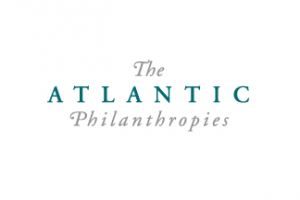The new and growing challenges of today might be met with tomorrow’s advancements in technologies such as virtual reality, image reading and consolidated databases in the years to come.
Two days after delegates to the United Nations set 17 sustainable development goals to be achieved within the next 15 years, leaders in media, science and policy gathered at the 92nd Street Y in New York City recently to discuss how to leverage burgeoning technologies and public awareness toward success.
#2030Now, a nod to the UN goals’ finish line, was prominently displayed on the 92nd Street Y stage during Social Good Summit 2015. Former U.S. Secretary of State Madeline Albright, Queen Rania of Jordan and Rock and Roll Hall of Fame inductee Patti Smith served among the panelists. During the two days, #2030Now garnered 1.7 billion online impressions, according to Yagmur Cosar, senior account executive for public relations firm FleishmanHillard. Storytelling and the need to better collect and utilize data were among the overarching themes of the summit, which was put on by the 92nd Street Y, Mashable, United Nations and United Nations Development Programme.
Filmmaker Morgan Spurlock, after screening a three-minute film featuring a high school student’s efforts to better detect pancreatic cancer, opined that short videos provide an accessible means of conveying a story without diluting the message. Spurlock said that by creating empathy and an ability to see the world through another person’s eyes, film and television encourage engagement in ways print media cannot. During the same panel, Priscilla Natkins, executive vice president at The Advertising Council, suggested that positive reinforcement also plays a role in engagement. The ALS Ice Bucket Challenge, for instance, both raised funding and awareness while offering participants the satisfaction of others seeing them as part of a greater good, Natkins said.
An emphasis is being placed on having people share their own stories. Martin Jakobsen, founder and director of Turning Tables, shared a music video created by Syrian refugees in Greece. With similar videos being filmed with individuals in other countries, informal social movements are being made with direct perspective of situations, Jakobsen said, allowing participants to inform the change they wish to see.
The next step in storytelling may be leveraging advancements in virtual reality. Gentry Lane, founder and producer of TDO Productions Social Impact Virtual Reality, and Christian Stephen, global editor of RYOT News, discussed the future of virtual reality during a panel. Though current applications include sports and gaming, virtual reality can serve as “an empathy machine,” according to Lane, who added that the world has entered into a virtual reality golden age as the technology becomes less bulky. Educating members of impacted communities to use virtual reality to tell their own stories is a means of conveying messages while steering away from voyeurism, said Stephen.
Data is also capable of telling stories, making it all the more important to compile comprehensive information. Better representing women and girls in data collection is vital in achieving UN goals, which include strides in gender equality, according to Data2X Senior Director Emily Courey Pryor. How public surveys are designed can be important in this regard, Pryor said, as responses to questions directed toward a head of household may not completely reflect household opinions. Both Pryor and Shamina Singh, executive director of the MasterCard Center for Inclusive Growth, stated that data equality equates to gender equality.
That equality extends to the LGBT community. “Orange Is the New Black” actress Laverne Cox wondered aloud the implications of the transgender community not being included in surveys and censuses across the globe. Centers for Disease Control data, for instance, lumps transgender women with men who have sex with men, according to Cecilia Chung, senior strategist for the Transgender Law Center. Shelby Chestnut, co-director of community organizing and public advocacy for the NYC Anti-Violence Project, opined that improved CDC, census and crime data is a fundamental step to addressing discrimination and violence against members of the LGBT community.
With data collection comes data use and implementation. During the summit, new technologies were discussed with an emphasis on potential social-good applications. Nagaraja Rao Harshadeep, global lead of World Bank Group’s Environmental and Natural Resources Global Practice, discussed Spatial Agent, an application that consolidates a wide range of data from national economic history to world population disbursement to climate change models. Harshadeep invited attendees to use the application and provide feedback.
With 1.8 billion images shared on social media each day, Ditto Labs is working to identify brand logos, faces, scenes and products in photos, according to CEO David Rose. The technology has, to date, been used to identify everything from healthy food choices to youth smoking habits and Rose opened up the possibility that Ditto may have applications in the realm of social good. One attendee suggested that the technology could eventually be used to track good deeds depicted in social media.










